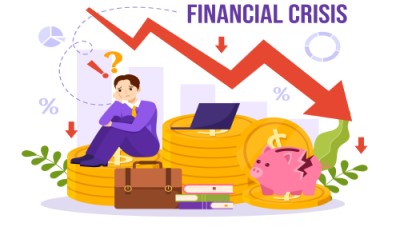Executive Pay: The Curious Case of Carlos Ghosn’s Arrest
April 3, 2025
 Executive Pay: The Curious Case of Carlos Ghosn’s Arrest
Executive Pay: The Curious Case of Carlos Ghosn’s Arrest
Carlos Ghosn is a 64-year-old French citizen who is the head of three major automobile companies viz. Mitsubishi, Nissan as well as Renault. To people who are familiar with the automobile industry, Carlos Ghosn is not a name that needs any introduction. He is the wonder executive who has rescued automotive firms from the brink…
 What the Current Wave of Protectionism and Populism mean for the Future of Globalization and Free Trade
What the Current Wave of Protectionism and Populism mean for the Future of Globalization and Free Trade
The Rise of Populism and Protectionism The election of President Trump represents the cusp of the current wave of protectionism and populism that emerged in the aftermath of the Global Financial Crisis of 2008. As the Brexit vote and the emergence of populist leaders such as Vladimir Putin in Russia showed, the disaffection and dissatisfaction…
 Corporate and Individual Strategies to Respond to the Protectionism Worldwide
Corporate and Individual Strategies to Respond to the Protectionism Worldwide
The Surging Protectionist Sentiment There is a surge of protectionism and populism worldwide. From President Trump’s Protectionist Rhetoric and his America First and Make America Great Again slogans to the rise of Anti Immigrant sentiment in Brexit Britain and the latent hyper nationalism in other countries around the world, there is a backlash against globalization.…
The previous articles in the module have discussed how the global financial crisis has been caused due to a combination of factors starting with the collapse of the housing market in the US and then due to the integration of the global economy rapidly spread to other parts of the world.
An aspect that was touched upon but not discussed in detail is the role of derivatives or the complex financial instruments used to hedge and guard against risk.
In other words, derivatives are financial instruments that are built on top of other instruments like securities, commodities and just about everything else.
Derivatives as the name implies are derived from the value of the underlying asset and hence are used to hedge against a rise or fall in the value of the underlying asset. Indeed, the global market for derivatives covers just about every asset in the world and there are even derivatives for hedging against the weather.
Since derivatives essentially are traded on the basis of the value of the underlying asset, any disproportionate fall in the value of the underlying asset would cause a crash in the derivatives designed for that purpose.
And this is what happened in the summer of 2007 when the housing market in the US started to go bust. Of course, the clever bankers had devised derivatives for such an eventuality as well and this was seen as an acceptable way of hedging risk.
So, the obvious question is that if both sides of the risk have been hedged, then there should not have been a bust in the derivative market. The answer to this is that those investment banks and hedge funds that had found the right balance between the different hedging instruments survived the crash whereas the other banks like Lehmann that were highly leveraged because of their exposure to the subprime securities market collapsed.

Of course, the above explanation is a bit simplistic since the basic problem was that the securitization of the mortgages was built on top of the plain vanilla mortgages and this coupled with excessive risk taking by derivative trading resulted in the crash of 2008.
The point here is that except for a few hedge fund traders and investment banks like JP Morgan, many banks simply were excessively leveraged which meant that the value of their liabilities far exceeded the value of the “real assets” on their books.
So, when the assets went bad, the liabilities mounted and they were left with toxic derivatives that needed bailouts from the government and write-downs to solve the problem.
Finally, as we shall discuss in subsequent articles, the absence of regulation played a major part in causing the crisis as the derivatives were traded in the OTC or the Over the Counter segment meaning that they were not subject to regulation. This meant that banks could play hard and fast with the rules and devise their own rules for derivative trading outside of the purview of the regulators.
Your email address will not be published. Required fields are marked *